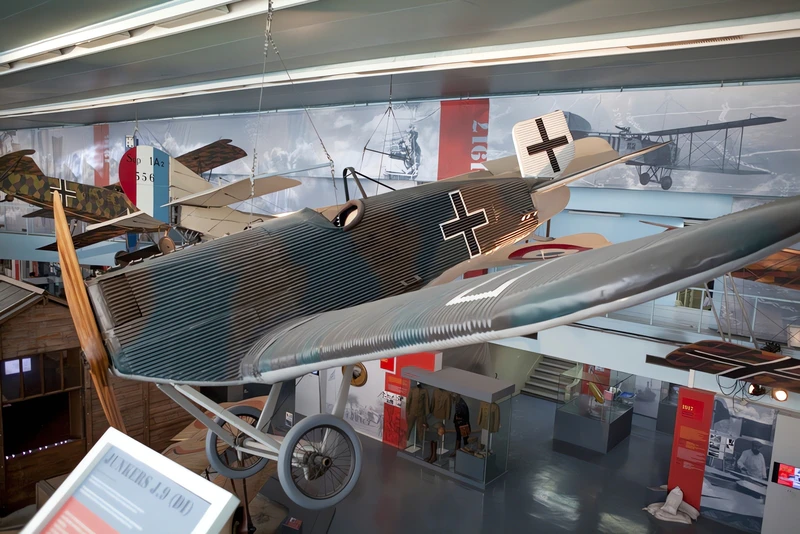
Junkers D.I | |
|---|---|
| Krajiny | Nemecko |
| Úlohu | Bojovník |
| Prvý let | 17. septembra 1917 |
| Postavený | 41 |
Komisia Junkers D.I (továrenské označenie J 9) bolo jednoplane stíhacie lietadlo vyrobené v Nemecku koncom prvej svetovej vojny, významné pre to, že sa stalo prvým celokovovým stíhačom, ktorý vstúpil do služby. Prototyp, súkromný podnik Junkers s názvom J 7, prvýkrát vzlietol 17. septembra 1917 a počas testov prešiel takmer pol tuctom podrobných zmien vo svojom dizajne. Keď sa začiatkom nasledujúceho roka ukázalo na Idflieg, ukázalo sa, že je dostatočne pôsobivé na to, aby viedlo k objednávke ďalších troch lietadiel na skúšky. Zmeny vykonané Junkers boli dostatočne významné na to, aby spoločnosť premenovala ďalší príklad J 9, ktorý bol dodaný do Idflieg namiesto troch objednaných J 7s.
Zdrojový: Junkers D.I na Wikipédii
| Junker J9 D1 Walk Around | |
|---|---|
| Fotograf | Unknow |
| Lokalizácia | Neznáme |
| Fotografie | 22 |
Pozri tiež:
Komisia Junkers D.I was a groundbreaking aircraft in the history of aviation, as it was the first all-metal fighter to enter service. It was designed by Hugo Junkers, a German engineer and entrepreneur who had a vision of creating aeroplanes that were more efficient and durable than the conventional wood-and-fabric ones. The Junkers D.I was based on the earlier J 7 prototype, which first flew in September 1917 and underwent several modifications during its tests. The final version, designated J 9 by the company and D.I by the military, had a monoplane wing made of corrugated duralumin, a metal alloy that was light and strong. The fuselage was also made of duralumin, with a tubular steel frame covered by metal panels. The engine was a water-cooled BMW IIIa inline six-cylinder, producing 185 horsepower. The armament consisted of two fixed Spandau machine guns mounted on the nose.
Junkers D.I bol predstavený v roku 1918, na konci prvej svetovej vojny. Mala to byť námorná stíhačka, pretože odolala drsným podmienkam a pristála v nerovnom teréne. Nevidel však veľa bojových akcií, pretože bol dodaný príliš neskoro a v príliš malom počte. Bolo vyrobených iba 41 lietadiel a väčšina z nich bola poslaná do námornej jednotky, ktorá pôsobila na východnom fronte po prímerí. Junkers D.I nebol veľmi manévrovateľný, ale mal vysokú rýchlosť a strop a vynikajúcu stabilitu a odolnosť. Vďaka kovovej konštrukcii sa tiež ľahko udržiaval a opravoval. Junkers D.I bol priekopníkom celokovového dizajnu lietadiel, ktorý sa stal dominantným v nasledujúcich desaťročiach. Ovplyvnil vývoj neskorších modelov Junkers, ako napríklad dopravné lietadlo F-13 a útočné lietadlo J.I. Junkers D.I bol tiež jedným z prvých lietadiel, ktoré používalo raketové techniky vzletu a dopĺňania paliva za letu. Junkers D.I bol pozoruhodným úspechom v oblasti inžinierstva a inovácií a míľnikom v histórii letectva.
Pohľady: 1273


